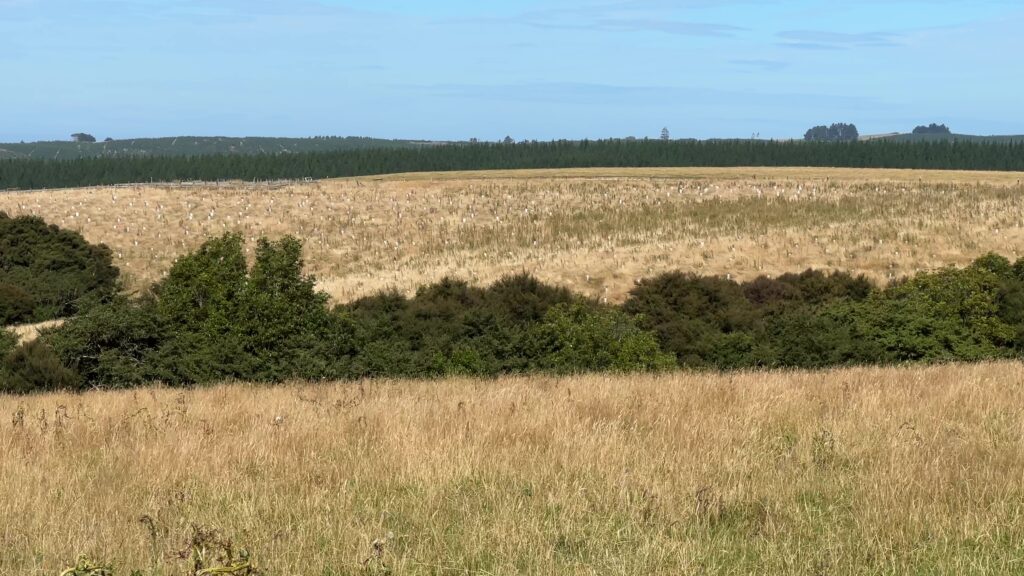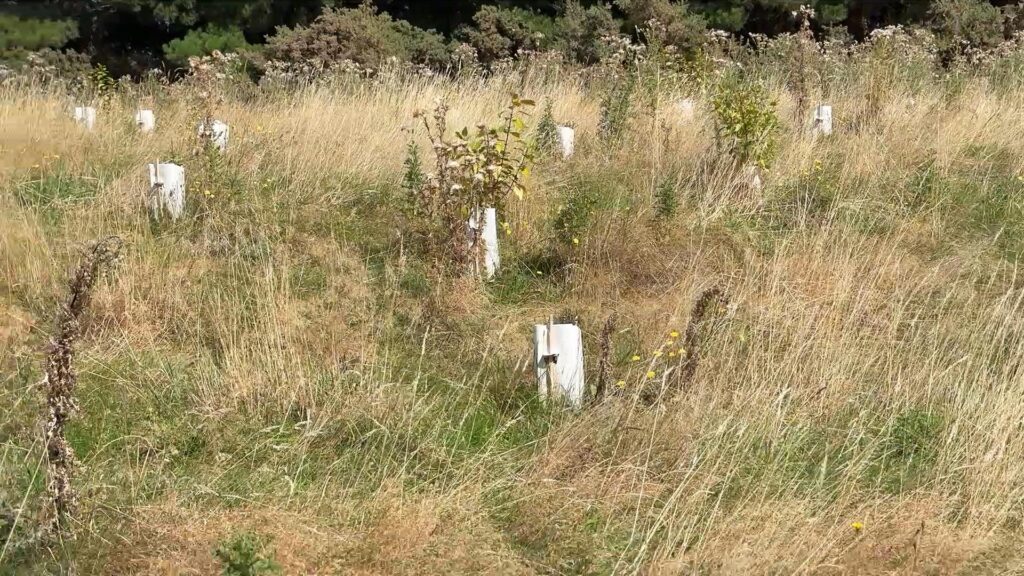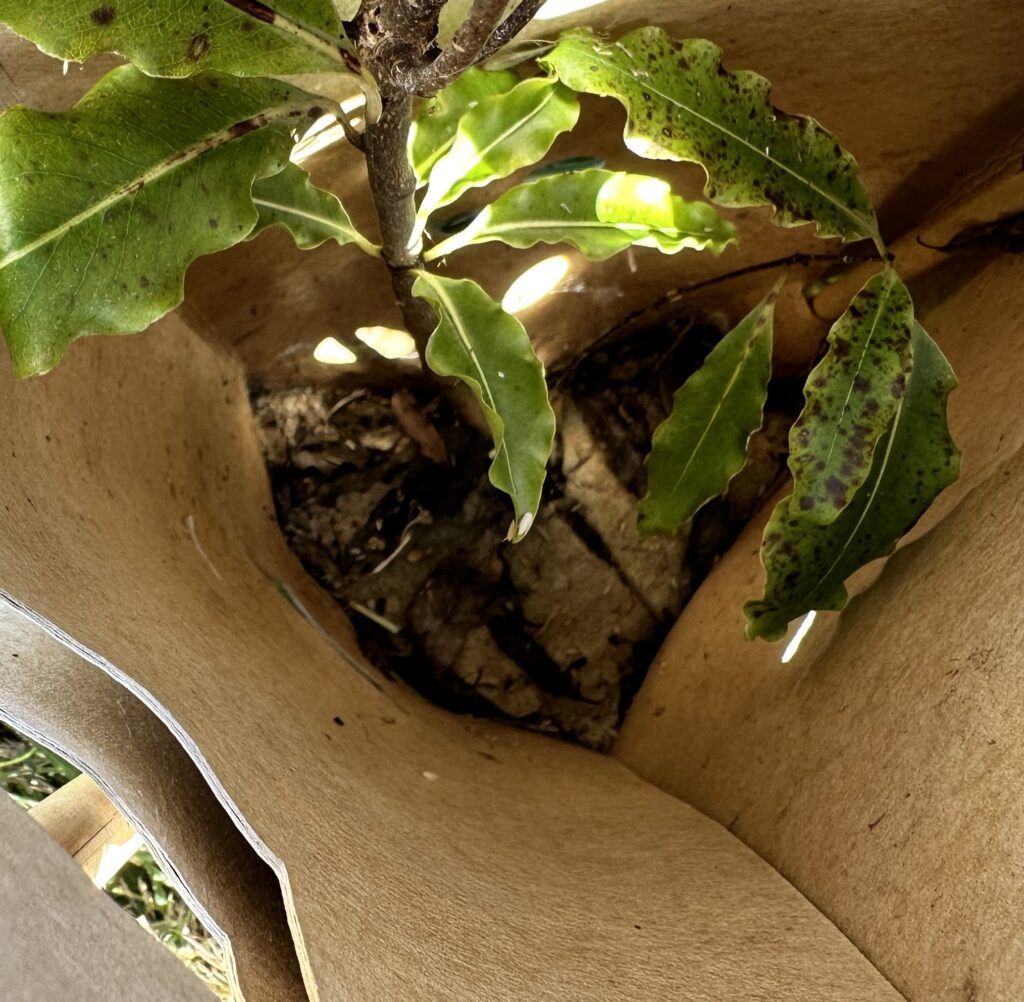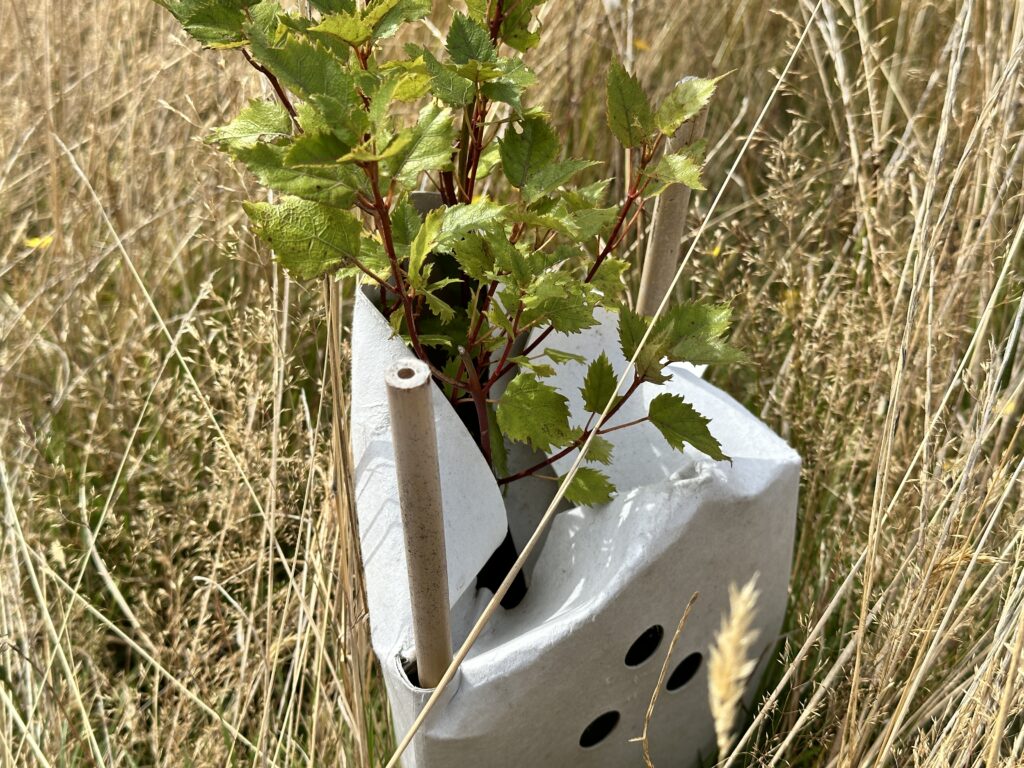Area 1 Nurse Tree Planting - 7 Months and One Summer Has Passed
I returned to Taieri Beach in March 2024 – the first time since the Area 1 nurse trees were planted in August 2023. My return was delayed whilst I arranged for the removal of the two dozen eucalyptus trees in Area 2.
During my absence, the nurse trees were attacked by feral goats, and more recently, deer. Mike Gorinski shot 4 deer in the three weeks preceding my arrival. He warned that large swaths of Area 1 were without nurse trees and that I had lost between 25% and 30% of all trees. Bryan Scott gave me a second opinion. He had also shot a deer, but said the tree losses were closer to 5%. Bryan thought deer would not be attracted to the acidic Kauri leaf taste, preferring the more succulent varieties, such as Broadleaf. Although the news was a shock, my main concern was to ensure there would be sufficient tree coverage to perform the “nurse” function for the Kauri trees. I was keen to assess the impact for myself.

The grass around the trees was long. The thistles were even taller than the grass and the vast majority of the nurse trees (especially the slower growers, like Kanuka). The standard of preparation and planting by Habitat Restorations Aotearoa was evident after 7 months. Around many trees, the circle of dead grass was still visible. The grass was not as long or as dense as elsewhere. This provided space for the trees, although it didn’t seem to prevent the (mostly Californian) thistles from growing close to the tree guards.
Three other components of the planting were also highlights to me: the woollen mats, the tree guards, and the tree size.

Woollen Mats for Weed Control
The woollen mats placed under the tree guard and around the tree stem during planting, were very effective for weed control. Where grasses were visible inside the tree guards, they were invariably growing through one of the guard wind holes, not up through the mat.
There was the occasional Californian thistle growing in the guard, but they were not well rooted, and could be easily removed. They may have germinated from seed landing inside the guard from an adjacent plant. The mats seemed to be very effective in limiting competitive pressure from established grasses.
The mat, together with the shading from the tree guard, kept the area around the tree stem moist.

Tree Guards
The durability of the FiberGuard tree guards has surprised me. They were subject to rain, hail and snow during planting, but so many remained with a good triangular shape. Breakdown of the fibre was minimal, and it certainly appears that they will last at least two years in my environment.
A few guards were displaced because an animal had impacted the guard, breaking the bamboo stakes off at ground level. I do not see this as a guard design failure.
A number of guards had their upper section folded over, often completely enclosing the tree. On closer inspection, the tree had been eaten, and the guard may have folded under the weight of a possum. When folded over, the possum was prevented from further accessing the leaves, saving the tree! Straightening the sides of guards that had completed cocooned a tree revealed that the leaves were green and growing. It seems that enough light was entering the space through the wind holes in the sides of the guard.
The tree guards and woollen mats have saved hundreds and hundreds of succulent trees from complete annihilation by the feral animals that came onto the property. If I ignore the time cost of having to wait for replacement trees to grow, the guards pay for themselves if more than 30% of trees are lost (unguarded trees can be lost to frost and snow, wind, drought, competitors, and feral animals).

Tree Size
When it comes to choosing the tree size, the temptation is to minimise cost and buy a smaller/younger tree. There’s no difference in having a tree grow at the nursery or in the ground on your property, right? Except there is.
I need trees at 3 m spacing. The trees need to perform the function for which they are planted (to protect the Kauri trees). It would be a false economy to plant younger (cheaper) trees, and expect them to transition from root trainers to the outdoors without a high failure rate. A high failure rate increases re-work costs (a pointless waste of resources).
Glen Riley (Habitat Restorations Aotearoa) and Phil Dunn (Ribbonwood Nurseries) discussed the best tree size for my project, and agreed that 1 litre pots will deliver my objectives. Now the summer is over, with a death rate of 1%, their advice seems perfect.

The video of my post-summer assessment is KT020, which can be viewed here or on the Kauri Trees YouTube channel.
02 April 2024
